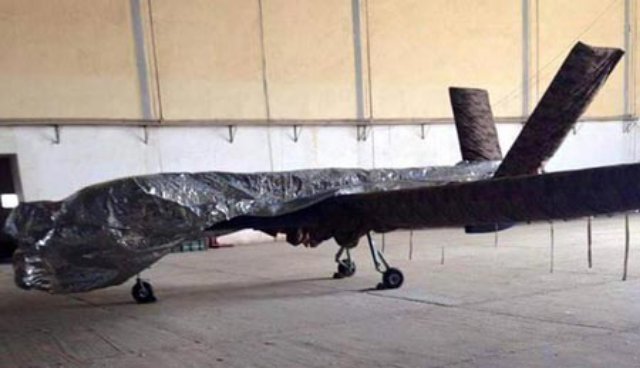A photograph has surfaced online which purportedly shows a CH-4B unmanned combat aerial vehicle stationed at an Iraqi Air Force base, according to a March 17 report by Moscow-based think tank Center for Analysis of Strategies and Technologies cited by China’s Global Times.
This is the first known instance of the drone, developed by Beijing-based China Aerospace Science and Technology Corporation (CASC), being exported, according to the paper.
The CH-4 series of drones, the design for which was heavily copied from the US MQ-1 Reaper developed by General Atomics, entered service with the PLA Air Force in 2013.
The CH-4 has a wingspan of 18 m and a maximum takeoff weight of 1350 kilograms. Two variants of the drone have emerged, the CH-4A surveillance drone and the combination surveillance and attack CH-4B. The CH-4A can fly for a maximum of 30 hours or 5,000 km, although another estimate put it as high as 40 hours. It can cruise at altitudes of between 5,000-7,000 m at a speed of 150-180 km per hour. The drone can fly within a 250 km radius of its operator, but with a satellite link this can be increased to 2,000 km.
The CH-4B can carry six weapons weighing up to a maximum of 250-350 kg, according to different estimates, and it is equipped to carry CASC’s 45 kg AR-1 laser-guided anti-tank missile, which can be fired from an altitude of 5,000 m, and several small satellite-guided aerial bombs, weighing 100 kg. With a full weapons payload it can fly for a maximum of 14 hours.
The CH-4 shares an engine with its predecessor the CH-3/3A drone, but an improvement to the plane’s aerodynamics, has reduced petrol consumption by 15% and the cruise-lift-drag ratio is said to be 1, allowing the drone to carry more and fly for longer.
The drone is equipped with two surveillance systems, a four-in-one photoelectric platform under the plane and a synthetic aperture radar, carried simultaneously.
The drone has some stealth capability too, as 80% of its surface is made with synthetic materials, which makes it harder for radar to detect. Its piston engine is also relatively quiet.
It appears from the plane’s structure that Iraq has received the CH-4B, rather than the CH-4A.
In 2014 there was also a report stating that a CH-4 craft was undergoing tests in Algeria. The CH-4 drone is said to be more competitive than the CAIG Wing Loong, which has already been exported to several countries, including Saudi Arabia. The drone system will likely cost less than an advanced main battle tank and will be affordable for emerging and developing countries, according to the Hong Kong’s Wen Wei Po.
Source: Want China Times


Why is it wearing a trash bag?
Stealth. 😉